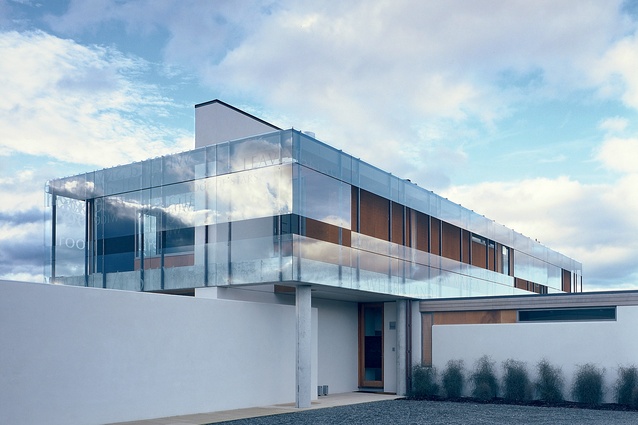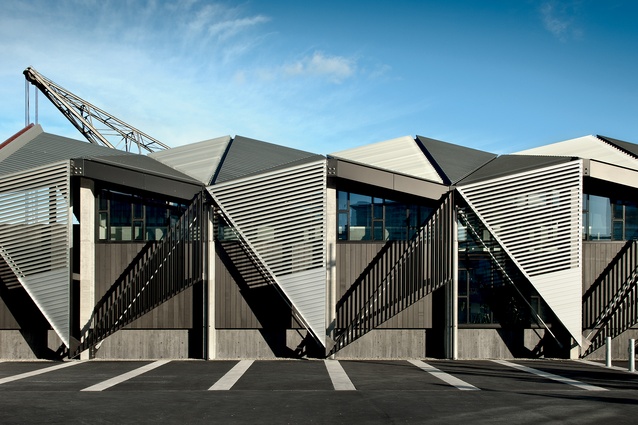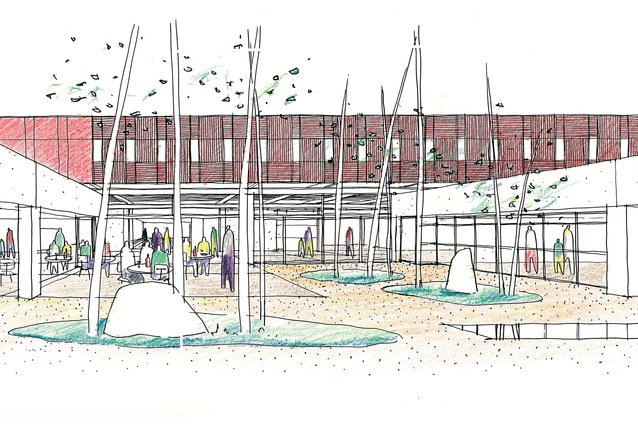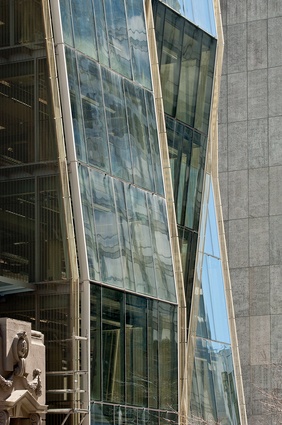2015 Gold Medal winner: Stuart Gardyne
The 2015 Gold Medal winner Stuart Gardyne talks with Justine Harvey about his career and the necessary simplicity of his architecture.
Justine Harvey: Were you born in Wellington?
Stuart Gardyne: Yes, I’m Wellington tangata whenua, really. I was born and bred here and have lived here most of my life, apart from when travelling.
JH: Where did you go to school?
SG: In Wilton, a 1950s suburb adjacent to Wadestown. I went to Wilton School (Te Kura o Otari), right beside the Otari Bush Reserve, which was a big part of my life in those days – a time when you were allowed to roam at leisure. In the ’50s, roads were being carved into the hillside and there was a smattering of architecturally designed houses – we lived in one – as well as builders’ houses and state houses. It was quite diverse in that respect.
JH: So you lived in an architecturally designed house; were your parents interested in architecture?
SG: Yes. We probably had copies of Home and Building magazine floating around and our house actually did feature in there. It was designed by Maurice Patience and right next door was a really nice house designed by Bill Toomath. It was owned by some diplomats and they had fabulous modern art: Illingworths, McCahons and Woollastons. It was probably my first exposure to contemporary modern New Zealand art. Down the drive, Jane Aimer lived in a house designed by Allan Wild and we knew each other.
JH: Were you interested from quite an early age?
SG: Yes, I was. Then, for about three years, I went to Wellesley College in Days Bay, which was a great school as well. Mark Fowler was a friend and he was the son of Sir Michael Fowler, an architect and the former Mayor of Wellington. So, by the time I went to Wellington College, I was aware that I wanted to be an architect. I knew that I had to study physics to enter architecture school and I absolutely loved maths. I guess I’m one of those people who likes the arts/the humanities, as well as maths and sciences.
JH: So what did your parents do?
SG: My father was an accountant who grew up in a big family in Southland – they were farmers going back to 1855 and originally from Scotland. My mum was a physiotherapist. I went to Victoria University of Wellington’s School of Architecture. Halfway through, I took a year off and went to Norway where my wife Janey has relatives. Scandinavian culture is really engaged with design and landscape; it is so integrated into life and there is, seemingly, a conscious desire to do things beautifully and with some kind of environmental sensibility.
Inevitably, that’s something a lot of people find frustrating about New Zealand culture because design and architecture can be considered to be a wank. Literature, for some reason, is considered to be an acceptable art, whereas sometimes architecture is considered to be an unnecessary extravagance and I don’t understand that. It’s inappropriate to believe that the creation of the places in which we live is unimportant.
JH: It’s so important.
SG: It is but a lot of people will disagree. Some would say that philosophy or thought is far more important.
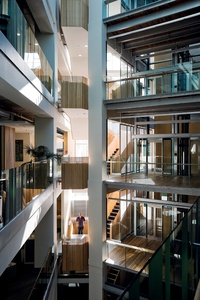
JH: But they are also aspects of architecture.
SG: Yes; the reality of architecture is that it is very broad. At one end of the spectrum, you are dealing with the quality of housing and avoiding unhealthy environments for houses – which are incredibly important issues for us to be dealing with. It’s a real shame that design and beauty are slightly frowned upon in our country; we almost prefer to focus on the rough and the ugly. Whilst I enjoy the Scandinavian and Italian holistic approach to architecture, I’ve realised also that the Māori culture and architecture of the tangata whenua of this country offer a much more holistic approach to space, design and history.
JH: And it’s conceptual, as well as spiritual, philosophical and environmental.
SG: It can be a bit embarrassing that we don’t know that much about our own culture.
JH: It’s all about education. You have to start teaching people from a young age to learn to be culturally minded; most of us of haven’t been taught that in school. If we learnt it, it was from our families or community.
SG: Yes, you learn through experiences. Working on the wharewaka was a cultural awakening for me about aspects of collective New Zealand culture. It made me aware of how little I knew and how you can take things for granted. You can form an awareness that may be completely wrong about your culture.
But, the older you become, the more you realise you don’t know. There is so much to learn about architecture, it’s an extraordinarily complex and broad subject and a single architect can never know all of that so you have to work in a team. You have to be a jack of all trades with a broad interest.
JH: Where did you work after graduating?
SG: I worked in Wellington. I was offered a job at Structon Group, a reasonably large multidisciplinary practice. It was an interesting place to learn and I was there for more than a decade. Right at the beginning, I met Craig Thomson and Arnie Makan, two architectural technicians who still work with me at our practice (architecture +). And there are others, including Ross Brown, Stephen Poulopoulos, Allan Wright and Michael Bennett.
Michael is the person I collaborate with on a daily basis. We are pretty much the opening batsmen in terms of design and sometimes he scores the runs and I help and, at other times, it’s the other way around. We have a really good working relationship and it’s fair to say that he makes me look good because the sum of our skills is greater than they are individually.
JH: At architecture +, how does your design process work?
SG: We do a lot of talking when we’re designing and, historically, it may have been over a drawn sketch but now it’s probably on SketchUp on the computer screen. And I do a lot of thinking; then, typically, I’ll go and talk with someone in the office about it. Architecture isn’t a day job, it’s a life that grabs you by the short and curlies and won’t let you go. You can’t switch off at 5 o’clock because there’s always something that you could have done on that project.

JH: Especially if you’re running a practice with a lots of mouths to feed.
SG: Yes, exactly. Occasionally you think: wouldn’t it be nice to have one of those jo
bs that, at the end of the day, you can just forget about. Sometimes I get home and I just don’t want to talk. You have to do other things; I have to keep fit and maintain friendships but I’m not very good at that. Thankfully, I have Janey for that. Also, I’ve started to read things that aren’t about architecture. Plus, I run – and we tramp as well as ski. It’s difficult to think entirely about architecture and I’m not sure it’s entirely helpful.
JH: You can live easily within a bubble in the architectural world.
SG: Yes. It’s a bit like what I was saying about Italian, Scandinavian and Māori culture: it’s not isolated, it’s holistic. If you do live in a bubble, I imagine that your architecture must suffer – it’s not going to be a real meaningful thing. There is a lot of architecture that I’ve lost interest in.
JH: That happens when you’ve looked at a lot of architecture.
SG: The fundamentals of architecture is that you have to create space. But so much architecture is worried about sculptural form and sometimes that creates amazing spaces but, frequently, it doesn’t. There is a difference between architecture and product design and sculpture. I think there is a mind and a skill that some people have about creating form. Zaha Hadid and Frank Gehry are two of the most famous architects in the world and they’re creating what I believe to be sculptural architecture. But what is important to me is the creation of space.
JH: And what is space for? People.
SG: Absolutely, it’s about people. It’s for occupation and habitation. It’s about living. When I was at the School of Architecture, John Gray was teaching architectural communication and he was a great sketcher; he would measure up a Victorian house with a tape measure and make us all do it and then draw the house freehand from the measurements with all of the furniture in it.
Now, it’s something I do all of the time. A lot of the work we do is corporate interior design where we are not changing the base building significantly but inhabiting an existing space – recycling or repurposing an existing building, like the City Gallery or Conservation House, or the work we’re doing in Hutt City at the moment. Here, you always draw the furniture and the partitions – the hard and soft fit-outs. You need to know how a building will work.
JH: It’s so frustrating to see a beautiful building that’s dysfunctional.
SG: As an architect, it’s a fascinating thing to understand why something doesn’t work and what could have been done differently.
JH: You need to be so judgmental of yourself, don’t you?
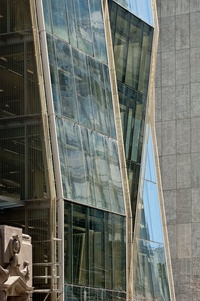
SG: If you can get every aspect right, you’re doing bloody well but the reality is that you don’t. So, habitation and occupation are very important to me. City Gallery, which I worked on for a 20–25-year period, is flexible and adaptable; it changes and has a new life every time you’re there. But it’s also a good vehicle for hanging art and I’m really proud of those spaces, which have a degree of character but also a degree of neutrality sufficient to allow new things to happen there.
The Barcelona pavilion would have to be one of my favourite buildings but I don’t believe that it would be as good if it didn’t have that sculpture in the pool at the end because, the way that you experience the building, it’s almost as if it was designed to host that sculpture. There are a few other elements, like a Barcelona chair and some curtains, but it’s not one of those spaces that would be rewarded for having a whole lot of life in it.
JH: It’s an aesthetic piece, isn’t it?
SG: Yes, in some ways, it’s a piece of sculpture but I still have huge respect because that building has had a huge influence on the way I design. But I think it’s a really useful thing if 99 per cent of our buildings are conscious and aware that they’re for people to put their furniture in, to occupy and inhabit. That’s why I have less interest in architecture as pure form.
JH: Your control is in the design.
SG: Yes and you have to understand the way it might be used but good design should be adaptable and flexible. You need to anticipate what the next owner or user is going to want or need. We designed the DoC Conservation House building and fit-out seven or eight years ago and the amount of restructuring since then has been enormous. It would have been completely irresponsible to design the interior for 2007 and the known structure of that organisation back then because it has now changed enormously.
I try to understand what a project is, what it needs and should become, and what our focus has to be. That doesn’t necessarily come right at the beginning. In the case of Wharewaka, we probably worked on aspects of the project, without really understanding it from a functionality perspective for some time, until an idea formulated.
Then, it was through discussion that the idea of the korowai – the cloak – was initiated by Mike Barns and it became a way to move the design forward. It was a useful vehicle which embodies the concept of this building as the manifestation of the human body and a protective skin: environmentally as well as metaphorically. Other times, if you’re working on a competition, then you have to evolve an idea very quickly. It’s not like you look at the brief and go, “yes, that’s what we’re going to do” but I find that the project decides itself in a way, depending on what the circumstances should be.
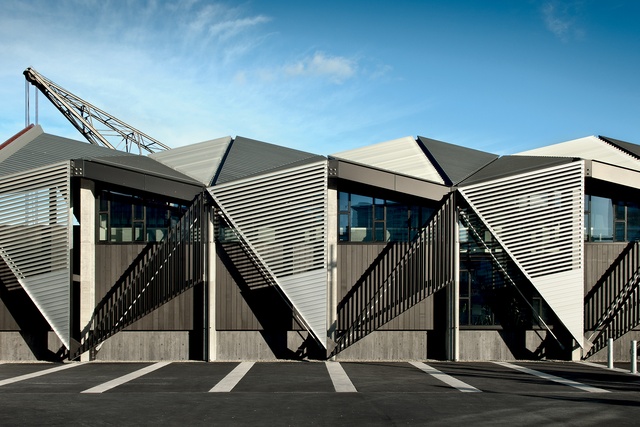
JH: Sometimes, do you come up with a fantastic idea just like that?
SG: I’m working on a house on Great Barrier Island and I think it is possibly one of the best plans I’ve ever done; it’s a simple pinwheel thing. The client wanted a courtyard house but, when you look at the plan, you’d say that it was a house in the middle of the site. Our design for Ponotahi House was more the Barcelona Pavilion free-plan scenario – using walls and buildings and forms to create outdoor space to define spaces internally and externally – whereas Great Barrier house looks like it’s sitting in the middle of the site but it’s actually creating four courtyard spaces around it. This idea came very quickly but the process of developing it into a really good solution took hours and hours because we were resolving the way that the pieces connect: manipulating things and clarifying the idea.
Ultimately, you’re trying to take it to another level that is often about beauty and proportions and something which is satisfying at an emotional level. For architecture to work, it can’t just be a good idea or a good concept. It has to be worked through to a level that is satisfying on lots of levels. Also, I’m interested in the remnants: the aggregation of stuff over time is what a city is about. Often, within a lot of good architecture, there’s palimpsest; you can see the remnants or traces that were there before that add richness.
City Gallery and a lot of our projects contain elements of that. I like things being ordered but I don’t really like things being tidied up completely. Order creates a structure to a place. The work we’re doing for Hutt City is about trying to create some sense of connection and relationship within a very large precinct where things are unconnected and isolated. There is a need for wayfinding and comprehension of how things go together and then, within that, you can allow some looseness.
The other aspect of order is that the architect is really synthesising a whole lot of disparate agendas and different requirements. The people involved often have different priorities and the architect has to work out, “What is the way this should be put together?” and “What are the big and small picture things?”. The architect needs to create a physical manifestation which deals with those disparate things, reduces complexity and creates a jigsaw puzzle that’s comprehensible and straightforward. I like richness – the manifestation of history and the patina – but the architecture I try to achieve isn’t about unnecessary complexity; it’s more about necessary simplicity.
JH: I guess that’s why so many great architects hit their stride in their 50s because it takes so long to learn the craft.
SG: Yes, it starts to become natural and instinctive. You gain a better feel for proportions and for the way things fit. You’re not trying to reinvent the wheel every time. You always start each project with a clean sheet of paper but you bring to that paper a knowledge and a wealth of experience. Then, I wonder if it becomes more of a challenge to keep it fresh as you become more experienced? That’s why it’s good to keep expanding your horizons.




